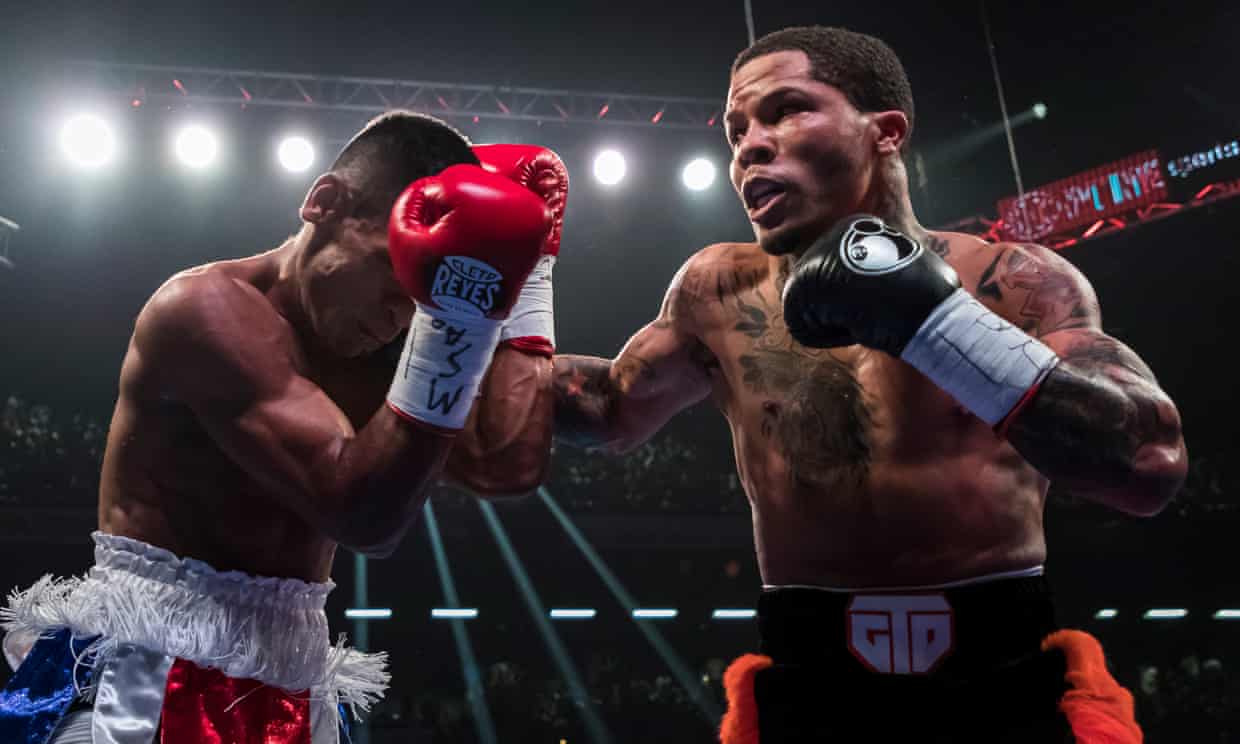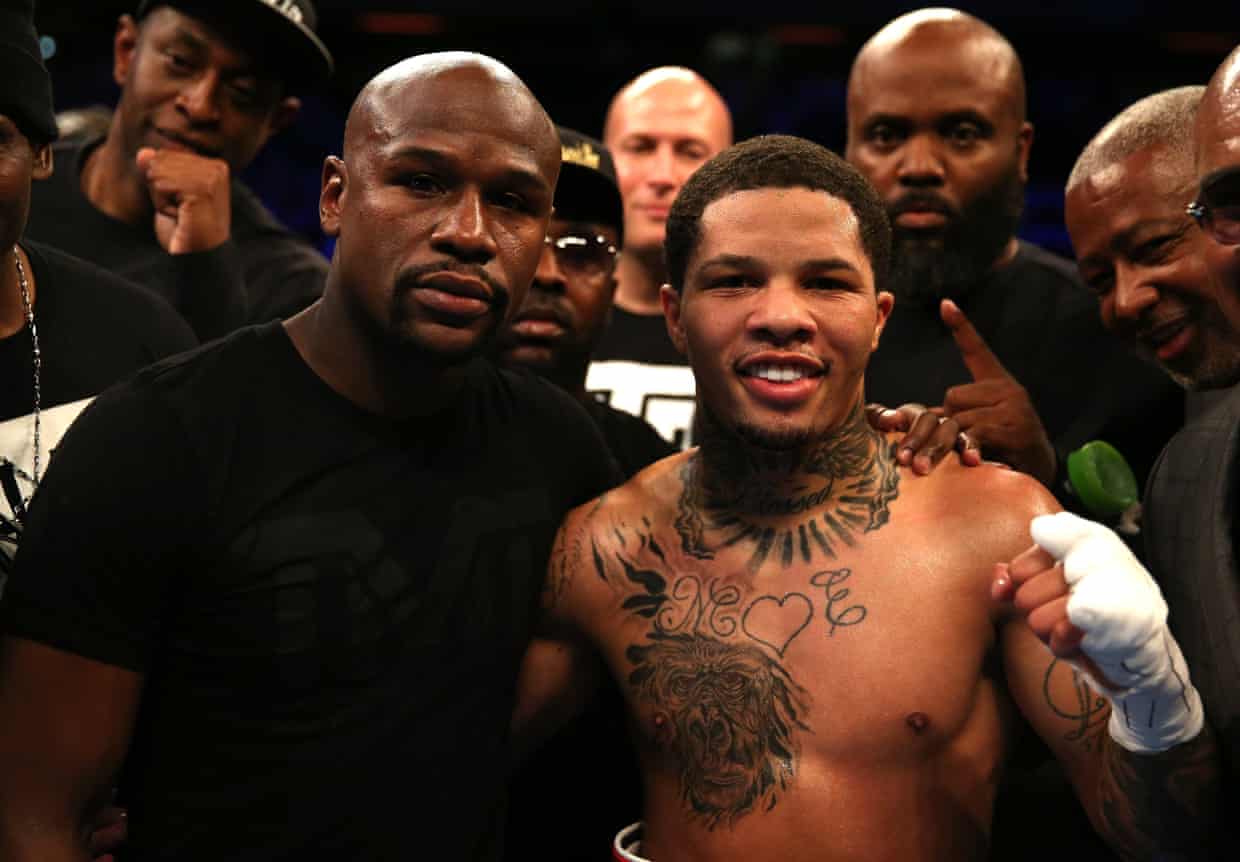
Boxing
Why doesn't boxing care about gender-based violence?
The Gervonta Davis video is the latest example of the boxing industry’s structural inadequacy and self-serving indifference when it comes to holding abusers of women to account
by Bryan Armen GrahamEarlier this month Gervonta Davis, the World Boxing Association’s lightweight champion and one of America’s most prodigiously gifted young athletes, was shown in a widely circulated video choking the mother of his child in front of hundreds of people at a charity basketball game on the campus of the University of Miami.
The short clip of the incident, which has been viewed more than 7.6m times, is stomach-turning. But maybe not for reasons that are immediately obvious on first viewing.
Watch it again and look at the shock on the faces of the young girls in the foreground as the scene abruptly ignites. Look at the man seated to the woman’s left who literally stands up and walks away when Davis yanks her from her chair. Look at the reaction of the nearby security guard twice Davis’s size who hardly bats an eye, like this is a common occurrence, as he allows the boxer to close his hands around the woman’s throat before all but clearing a path for him to drag her into the darkness beneath the stands.
Had Davis been putting his hands on a man in the same way, you can bet that a dozen other men would have flailed into the situation to break things up. But it was a woman. And it was allowed to happen while a whole group of children watched. Ultimately, no one but Davis himself can be blamed for what unfolded, but the optics of indifference on display in those 14 seconds paint a chilling picture.
Davis immediately took to social media for damage control as the video rapidly spread, claiming “I never once hit her” on his since-wiped Instagram, only to voluntarily surrender to Coral Gables police three days later on a charge of simple battery domestic violence. An arrest report acquired by the Guardian stated that a surveillance camera in the room they disappeared into “shows a partial view of the defendant pulling his arm back and then forward towards the victim, which is consistent with a strike to the face where the victim sustained injuries to her lip and left jaw”.
You’re reading about this particular case only because Davis is a famous athlete. He came up the hard way from abject poverty in west Baltimore, learned to box under the trainer who inspired the Cutty character in The Wire and excelled to become the sport’s second-youngest world champion at just 22 years old. He is the type of homegrown property with a compelling backstory and crowd-pleasing style that makes US television executives salivate. Under Armour saw enough in Davis to sign him to a sponsorship deal and plaster billboards with his image, a rare mainstream breakthrough in a sport that’s increasingly been ignored by major brands. (An Under Armour spokesperson told the Guardian the company parted ways with Davis “a while ago” but did not respond to follow-up questions about the terms of the contract and the reason it ended.)
But the story here is not Gervonta Davis. That’s a copout that allows us to otherize a single young black man who participates in a sport broadly associated with violence, as if gender-based abuse isn’t happening all around us, in every culture and in every segment of society, with countless survivors either afraid to report it or without the benefit of video footage to back up their claims. This is not about boxers being violent. Or athletes who participate in violent sports being violent. Or even that sportspeople from distressed backgrounds are violent.
Men are violent. White and black, rich and poor. Impunity for violence against women is as universal an issue as issues get. And everyone must call it out when they see it because the longer we keep looking the other way, the more it’s bound to keep happening. And this is where boxing as an industry, specifically, is failing. The sport has demonstrated one time after another that it is structurally ill-equipped to hold transgressors like Davis responsible and deliver legitimate repercussions for their actions.

Athletes in America’s most popular sports like football, basketball and baseball are (at last) being punished harshly for gender-based violence, through suspensions or the loss of endorsement deals, but we have yet to see boxers face the same consequences. On some level, putting aside the normalization of the abuse of women in our society, it fits into the framework of how the broader public understands a sport like boxing. Violence begets violence, it’s thought. But that, too, is a fallacy.
The problem is inherent in the sport’s decentralized power structure. Boxers are independent contractors and the absence of a central governing body means any form of discipline would have to come from the networks and the promoters, who have a direct financial stake in a fighter’s public profile and ability to generate revenue. Any of the individual athletic commissions which sanction the sport on a state-by-state basis could put their foot down and deny a fighter the license required to fight in their boundaries, but there will always be another state waiting with open arms to deliver a big-ticket event, and the economic impact it brings, to their backyard. Same goes for the networks, in this case Showtime, which has made no small investment in broadcasting Davis’s past seven fights either on premium cable or on pay-per-view. They have declined to comment on the matter but their position doesn’t require any extraordinary insight to divine. They are a publicly traded company answerable to their shareholders, fully aware their rivals in a space where market share is a zero-sum game would be falling over themselves to sign Davis if they dropped him. They want to be responsible, but they also want to remain in business.
Truth is, the same power brokers who dress boxing up as the biggest sport in the world for a couple of nights a year are more than content to have it spend the rest of the calendar in the shadows, where incidents like these barely make the news and can be marginalized during the next money-spinning promotion. So once the commission has passed off the responsibility to the network, and the network has passed it off to the consumer, the entire operation is dependent on the public’s indifference when it comes to violence against women.
There is simply no existing incentive to take a strong disciplinary stand when time and again it’s been proven that any stigma resultant from instances of gender-based violence does nothing to compromise a fighter’s market value. In fact, many boxers have been rewarded in the immediate aftermath, essentially profiting off their notoriety. Mike Tyson’s first fight back after serving a three-year prison sentence on a rape conviction, despite being a glorified exhibition, remains one of the highest-grossing events in the sport’s history. And Floyd Mayweather Jr, who mentored Davis for years, was handed a quarter-billion dollar contract from Showtime and CBS only months after serving a 60-day sentence in a Nevada county jail for a domestic abuse conviction in 2013. Maddeningly, to promote his first fight under the record-smashing deal, Showtime infamously televised an hour-long infomercial, produced by Mayweather, which reframed his incarceration as an obstacle to be overcome on the comeback trail.
Boxers, contrary to the public perception, are not more prone to violence outside the ring than anyone else. Putting aside the many studies that show athletes in violent sports commit gender-based violence at a lower rate than the general population (since rates are unreliable and essentially meaningless due to underreporting); anecdotally, any boxing lifer will tell you the sport does far more to drill violence out of adolescents who come from at-risk circumstances than it’s done to exacerbate aggressive tendencies, teaching its practitioners to control and channel extreme impulses toward productive ends.
Which is to say I am pretty sure what happened that night in Coral Gables has nothing to do with Gervonta Davis being a boxer. But until the machine which profits from him can find a way to place something between Davis and the next big payday besides an Instagram mea culpa, there’s no incentive for him to assume responsibility for his behavior and the cycle is bound to repeat itself. The only question is whether anyone with a seat at the table will care. No one but Davis himself can be directly blamed for what happened in that gym, just as no single party is entirely responsible for an industry’s inability to hold abusers to account. But as is clear in those 14 seconds, the failure of the whole collective is impossible to deny.